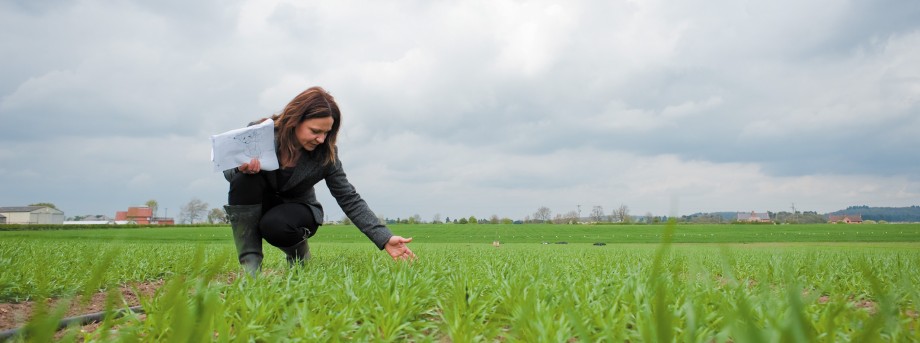The University of Nottingham
 Exchange online
Exchange online
Research Exchange
Using maths to feed the world

In the race to breed better crops to feed the increasing world population, scientists at The University of Nottingham are using maths to find out how a vital plant hormone affects growth.
Gibberellin is a hormone which plays a key part in development throughout the plant, from the root to the flowers and leaves. The hormone works within a complex network of molecules inside the plant, translating signals from the environment into responses in the plant so it can adapt and survive.
Many of the crop varieties developed during the global agricultural ‘green revolution’ of the 1960s were found to have genetic mutations in this important pathway. Now a team of scientists has applied mathematical approaches to understand how this ‘green revolution’ hormone works to control plant growth. They have then been able to show how these interactions result in changes in hormone levels that could be key to breeding improved crop varieties in the future.
Leading the research at Nottingham, Dr Markus Owen, Reader in Applied Mathematics, said: “We know that plants with low levels of gibberellin show drastically reduced growth, whilst adding gibberellin can significantly increase growth rates. Mathematical modelling has proved to be a powerful tool to help us understand how gibberellin works. Ultimately, this should help plant scientists to develop crops with improved growth, and hence to address problems of global food security.”
A second piece of research in this area has looked at the gibberellin distribution along a growing root, a factor which also affects growth and development. A team led by Professor of Theoretical Mechanics John King, has used multiscale mathematical modelling to probe how the gibberellin signalling network controls root growth. Work by researcher Leah Band and Susana Ubeda-Tomás revealed that dilution of gibberellin in rapidly expanding cells can explain why growth finally ceases.
The study led by Dr Owen highlights the importance of interactions between several key feedback loops within the gibberellin signalling network.
Professor King’s team combined that signalling network with a model for the elongation of a root, to predict how DELLA proteins (key components within the gibberellin signalling network which normally suppress growth), increase along the root, which explains experimental observations of growth rates.
Both studies have just been published in the leading academic journal Proceedings of the National Academy of Sciences of the United States of America (PNAS).
This work was undertaken at the Centre for Plant Integrative Biology, a hub for interdisciplinary plant and crop research at the University. It was conducted in collaboration with researchers at the University of Birmingham, Albert Ludwigs Universität, Freiburg and Rothamsted Research.
The research was funded by the Biotechnology and Biological Sciences Research Council (BBSRC) and Engineering and Physical Sciences Research Council (EPSRC) through their joint ‘Centres for Integrative Systems Biology’ initiative.
Tags: Centre for Plant Integrative Technology, Crops, DELLA proteins, gibberelin, Global food security, growth, mathematical modelling, mathematics, plant hormone, Rothamsted Research
Leave a Reply
Other News

Top prize for quantum physicist
A University of Nottingham physicist has won a prestigious medal from the Institute of Physics for […]

Zero carbon HOUSE designed and built by students comes home
Design and construct a low cost, zero carbon, family starter home, transport it to Spain, build […]